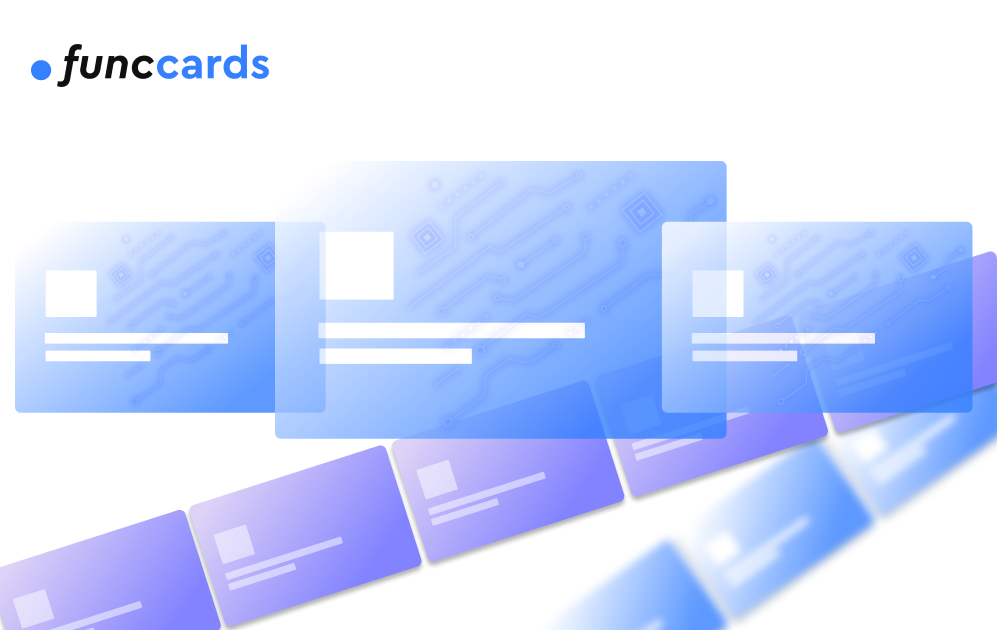
The best virtual cards for paying for foreign advertising services

The campaign plan is already in hand: the budget is agreed, the creatives are ready — all that remains is to make the payment. But instead of confirmation, the system shows an error. This happens quite often, especially if you run advertising through Google, Meta or other large platforms — and do it from Eastern Europe or the CIS.
The problem is that regular bank cards from these regions are often blocked or do not pass moderation. In addition, they limit your actions: change the limit, transfer expenses to another project or quickly block the card — all this takes time and creates unnecessary hassle.
In such cases, virtual cards work best. Advertising platforms accept them without problems, and it is convenient to manage expenses regardless of scale — whether you work alone or in a team.
Today we will discuss:
- which cards are suitable for Google Ads, Meta, TikTok and others;
- how to choose a reliable provider;
- and what tools will help you work more efficiently.
Why do advertisers need virtual cards and how do they work
A virtual card is the same bank card, only without plastic: with the same capabilities and even more convenient. No branches, mail, and plastic envelopes — everything is instant, in a few clicks.
Depending on the service, such cards can be:
- Debit — top up with a certain amount and spend within the balance.
- Credit (with some providers) — with the ability to exceed the current balance.
- Multicurrency — support USD, EUR, and sometimes cryptocurrencies (for example, USDT), which is important for global advertising.
Read more about services that allow you to conveniently withdraw USDT to virtual cards in a separate review on the FuncWallet blog.
Why is it convenient for advertisers to work with virtual cards?
Security. Each card can be disposable or with a limited validity period. If the service is compromised or the account is blocked, the card is easy to replace. You can also avoid the risk of draining your main bank account.
Flexibility and control. You can issue a separate card for each advertising account, campaign, or client. In some services, even in bulk, dozens at a time. And also: it is easy to set limits, monitor expenses in real time, and block if necessary.
Budgeting and scaling. You don’t just pay — you manage money. In large teams, virtual cards become part of the financial strategy: who to give how much, for what, and when.
Automation. The best services offer APIs for integration with accounting systems. And also — advanced reports, linking to CRM or analytics. Less manual work — more control.
In the end, the main thing — they just work. Quietly, stably, without blocking and surprised calls from the bank. And that is why arbitrageurs, marketers, and media buying teams are switching to virtual cards.
Which advertising platforms support payment with virtual cards
Advertising platforms are becoming more and more picky about payment methods. However, high-quality virtual cards are now supported by most global services. Especially if they have the appropriate BIN, a stable transaction history and are issued by a trusted provider. Let’s consider the main platforms that most arbitrators and marketers work with.
Google Ads
This is one of the most stringent systems in terms of verification of payment methods. Everything is decided here by the BIN code of the card – that is, the first digits that determine its type and country of issue. If the card does not have the “correct” BIN or was used in a gray scheme – Google instantly blocks it.
However, virtual cards with relevant BINs (for example, in FuncCards) are easily tied to the account. They are chosen precisely for their stability, the possibility of replacement and budget control.
By the way, in the blog we have already analyzed the TOP cards for advertising on Google and Facebook in arbitration
Meta Ads
Meta (Facebook and Instagram) is no less demanding – especially after the introduction of stricter rules for advertisers from the CIS. Many standard bank cards simply do not pass moderation or face mass refusals in transactions.
That is why arbitrators use separate virtual cards for each account, limit budgets, change cards at the slightest suspicion. It is important that the card is issued on a reliable platform and does not have a history of bans.
A separate advantage is the mass generation of cards (for example, in FuncCards), when you create dozens of options at once and test which one “takes root” best.
TikTok Ads
TikTok is actively expanding its advertising infrastructure, especially in Asian and European countries. Payment here is generally less demanding than in Google or Meta, but problems with bank cards also occur.
Virtual cards allow you to:
- quickly test creatives for different markets;
- avoid linking personal bank accounts;
- change payment methods quickly in case of blocking.
In-app networks (Unity, IronSource, Mopub, etc.)
These platforms are used for advertising inside mobile applications – in-game, during loading, in banners. And although they are not so strict about payment methods, stability is still critical here: each payment stop is lost traffic.
Virtual cards allow you to:
- create a separate card for each platform or geo;
- track spending on each channel;
- easily change the source of funding (bank top-up or crypto).
Such cards are ideal for agencies and teams that work with a large pool of networks.
Thus, virtual cards have become the No. 1 tool for paying for advertising – both on classic platforms (Google, Meta) and in mobile networks. The main thing is to choose the right provider and BIN cards. And about this – further in the text.
Criteria for choosing a virtual card for advertising
There are many services on the market that offer “virtual cards for everything”. But if you work with advertising, this “everything” is not enough. You need an accurate tool – stable, predictable, with appropriate characteristics. Below are the key parameters that you should pay attention to before choosing a platform.
1. BIN and the ability to link to an advertising account
BIN (Bank Identification Number) is the first 6 digits of the card that “tell” the system where and by whom it was issued. It is the BIN that determines whether your card will pass Google Ads or Meta.
Choose providers that:
- have verified BINs for Google, Facebook, TikTok;
- allow mass testing (issue many cards at the same time – for example, as in FuncCards);
- promptly change cards in case of blocking.
Not all virtual cards are suitable for advertising: even if the card technically works, the system can “ban” it simply for the country of issue.
2. Commissions: for issuance, replenishment, transactions, returns
Advertising is a game of ROI. And unnecessary commissions here easily eat up profits. Before registering, be sure to check:
- How much does it cost to issue one card? (FuncCards — from $1/€1)
- What percentage is charged for replenishment? (FuncCards — 2,5–4%)
- Is there a fee for an unsuccessful transaction?
- How much does a refund cost?
- Is there a monthly subscription fee?
In reliable services, these conditions are clearly spelled out and not hidden.
3. Supported currencies and countries
This is especially important if you work in several markets or operate budgets in different currencies.
The advantage of multi-currency cards (USD, EUR, sometimes GBP), which:
- do not charge a conversion fee (or minimize it);
- allow replenishment both from bank accounts and with crypto (e.g. USDT).
Some providers limit access depending on the country. Check whether you can create an account from your jurisdiction.
4. Number of cards and a single balance
In professional advertising campaigns, it is important not just to have a card – but to manage dozens. Here the following are critical:
- Mass generation (create 10-100 cards at once)
- One common balance (money is distributed between cards, and not replenished separately)
- The ability to limit each card (daily, monthly, maximum payment, etc.)
This is especially convenient for arbitrators, teams and agencies – and is implemented, for example, in FuncCards.
By the way, the FuncWallet website has a detailed guide to the platforms that are best suited for creating virtual cards for international payments.
In short: not all virtual cards are created equal. What works for purchases on Amazon will not necessarily work in Google Ads. Choose the tool for the task – and do not forget about the details that are often “hidden in asterisks”.
Tools for verification and integration
To make work with payments even more efficient, it is worth using additional solutions:
- AML bots – help check the purity of crypto addresses and avoid fraudulent transactions
- APIs for integration – allow you to automate setting limits, replenishment, card creation, etc.
These services are not just “where to pay for advertising”, but full-fledged tools for managing finances in arbitration. Choose the one that matches your strategy.
Tools for verification and integration
Paying for advertising is not everything. For the process to be truly effective, you need to have control, security and the ability to scale. This is where additional tools come into play: AML monitoring and API integrations.
AML bots: safe work with crypto payments
When replenishing cards with cryptocurrency, especially USDT, it is worth checking the origin of the funds in advance – otherwise there is a risk of blocking the account or restrictions from the platform.
AML bots help check the history of crypto wallets and determine whether they are associated with risky transactions.
Why is this needed:
- to check whether the crypto does not come from the darknet, fraudulent schemes, scams;
- to avoid blocking when withdrawing funds to virtual cards;
- to increase the chances of passing moderation in advertising offices.
API for automation: convenience + scale
Many services for virtual cards, in particular FuncWallet or Airwallex, provide API access, so all operations — from issuing cards to setting limits — are easily automated through CRM or internal systems.
API capabilities:
- automatic creation of new cards for each project/office;
- setting limits and auto-replenishment;
- integration with reporting and analytics;
- budget distribution between teams and clients.
For large teams, this is indispensable – you don’t need to “manually click” each action, and scaling becomes much faster and more accurate.
If you are looking for options with flexible integration, we recommend paying attention to a selection of payment solutions with API support – it will help automate most processes.
In modern digital marketing, you can’t do without virtual cards. This is no longer just an alternative to banking ones – it is a must-have for those who work with advertising on Google, Meta, TikTok and other global platforms.
- Virtual cards provide stability, control and flexibility: they can be instantly issued, limited, blocked and changed to suit the campaign’s objectives.
- FuncCards is a universal solution with fair commissions, multi-currency, support for advertising platforms and convenient card management in a team or solo.
- Combine services to suit your needs: FuncCards for daily campaigns.
In advertising, the winner is the one who can do it faster than the competition. And virtual cards are exactly the tool that allows you to launch, scale and control costs without unnecessary bureaucracy.

